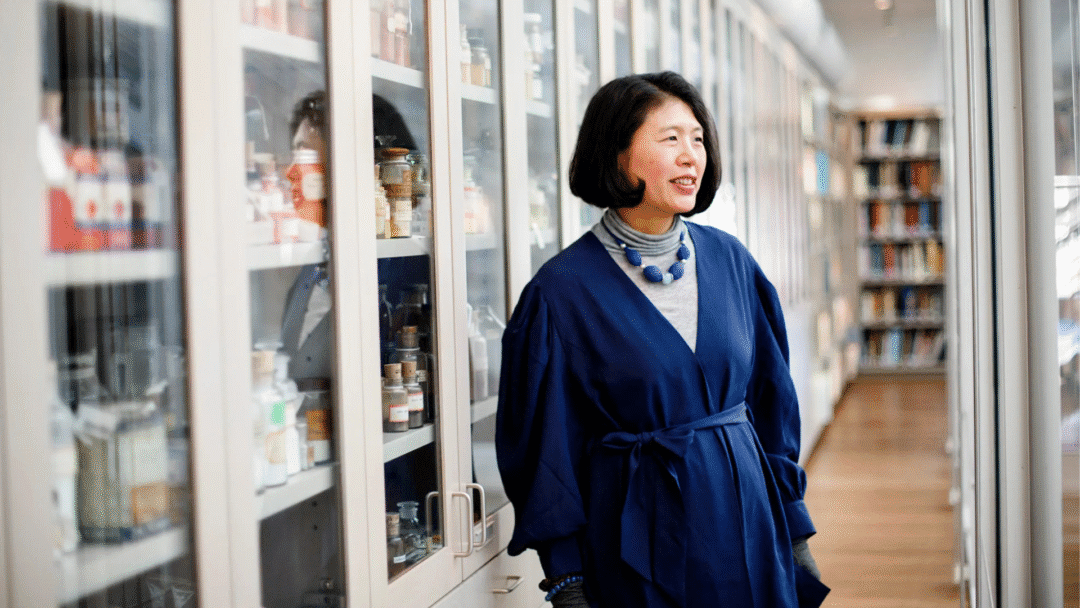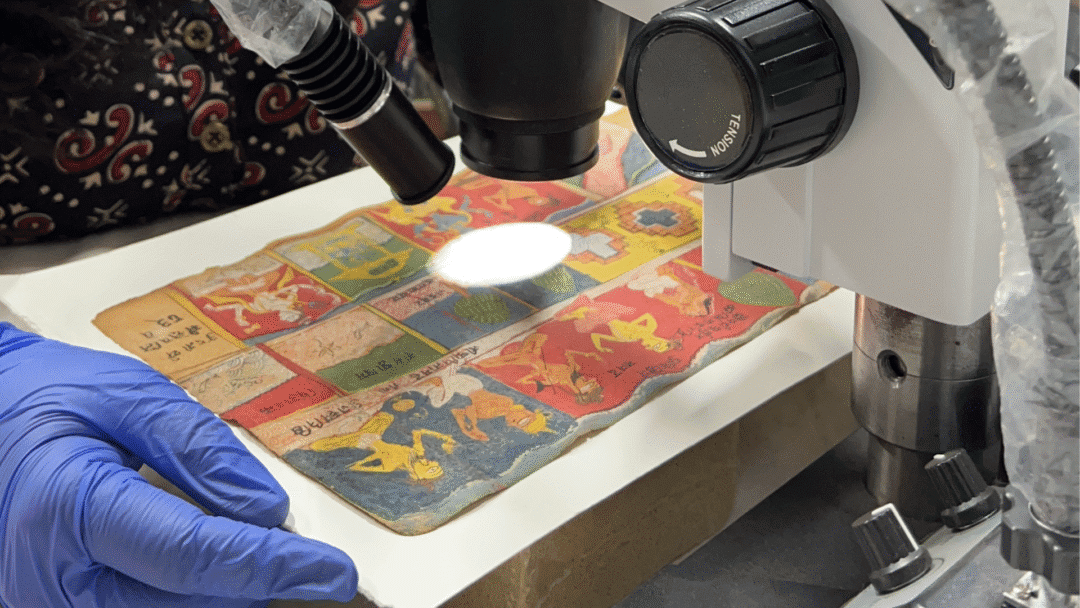“Color is elemental, a fundamental phenomenon of the natural world. In the hands of artists it takes many forms. Compared to the intermingled colors an Impressionist painter might use or muted hues a Chinese landscape artist would deploy, South Asian painters in the pre-modern era had a distinctive approach to color.”
These are the words to an exhibit opening at the Museum of Fine Arts, Boston (MFA), “Red, Yellow, and Gold: South Asian Paintings at the MFA, Boston, which celebrates color in South Asian art, as well as the collaborative work that Professor Jinah Kim’s Mapping Color in History project has been doing with the MFA.
Jinah Kim, the George P. Bickford Professor of Indian and South Asian Art, Department of History of Art and Architecture, and Professor of South Asian Studies in the Department of South Asian Studies at Harvard, runs the Mapping Color in History (MCH) Project, a digital research platform that brings together the scientific data drawn from existing and ongoing material analyses of pigments, especially in Asian painting, to enable historical research (read this recent Scroll.in article for a history of the project). She has been working with the MFA from the beginning of the project and shared more in this Q&A about the collaboration and the exhibit now on display.

Prof. Jinah Kim, George P. Bickford Professor of Indian and South Asian Art in the Department of History of Art & Architecture | Harvard Gazette photo by Grace DuVal
Mittal Institute: Tell us about the exhibition and how the focus on color came about?
Prof. Jinah Kim: Dr. Laura Weinstein, Ananda K. Coomaraswamy Curator of South Asian and Islamic Art at the MFA, reached out to me with her idea to curate an exhibition focused on color in Indian painting because of the research we have been doing in collaboration with the MFA for the Mapping Color in History Project. I was thrilled to hear from her about this exhibition idea as I had dreamed of doing such an exhibition to cultivate deeper appreciation of painting traditions developed in India
Her idea was to introduce the paintings curated along the key visible colors, highlighting major pigments used to create such colors. She was interested in sharing the scientific knowledge about colors that are generated in the MFA’s Asian Conservation Studio (working closely with the conservator, Michiko Adachi) and the Conservation Science Lab (led by Dr. Richard Newman), which would include a concise introduction to scientific methods and pigments/colorants’ characteristics.
Mittal Institute: How does it connect with the Mapping Color in History project?
Prof. Jinah Kim: MFA has been one of the two core partners in the MCH project from the very beginning, which means the MFA’s conservation scientists, conservators, and curator (Laura) have been involved in the development of the project from its initial conception (I think we held initial brainstorming meetings in 2018, and the first set of analytical study at the MFA was done at my request for my second book, Garland of Visions: Color, Tantra, and a Material History of Indian Painting, happened in 2017.)
We have 38 objects’ pigment analysis data published on our site, which includes data from some analysis campaign conducted under the aegis of the MCH project. This was funded by the Harvard’s Faculty of Arts and Sciences Dean’s Competitive Fund for promising scholarship. What’s exciting about the exhibition is that it prompted further analysis on more objects, and we hope to incorporate more data from the MFA’s on-going research on pigments and materials in South Asian objects.
What’s exciting about the exhibition is that it prompted further analysis on more objects, and we hope to incorporate more data from the MFA’s on-going research on pigments and materials in South Asian objects.
It is difficult to display detailed analysis data in an art exhibition with limited space. The objects should be the main focus of visitors’ experience, but with the MCH database available and accessible to anyone with internet access, it’s possible for people to check and see the related data even while looking at the painting, so there are QR codes to access the MCH data for some objects.

An early 16th century manuscript is examined under the optical microscope, part of the MCH mobile heritage lab.
Mittal Institute: Can you tell us about some of the pieces that are exhibited?
Prof. Jinah Kim: The exhibition that’s currently up focuses on the warm colors – Red, Orange, Yellow, and Gold – and it includes many exciting objects that are not only art historically important but true delights to savor slowly. There are several objects on display I have actually never seen in person before, like this Bhairava Raga from Amber and a folio of the Kedara Kalpa, a Śaiva pilgrimage text, which is always a treat.
The exhibition also includes a few fantastic textile examples where we can see discerning usage of different colorants – you can marvel at the discerning taste that must have appreciated the subtle differences between organic red colorants as in one sari (from Gujarat) uses cochineal, originating from South America, which was introduced to the rest of the world after the sixteenth century, for the border whereas the rest of the sari uses lac, a common organic red colorant in South Asia.
Another important piece that one cannot miss is the small fragment of fifth-century wall paintings from Ajanta, which usually sits higher on the wall of the South and Southeast Asian art gallery. I am grateful to Laura that she included this piece, allowing us to see it more intimately without craning one’s neck.
Mittal Institute: Can you tell us about the next exhibit in this color series?
Prof. Jinah Kim: The next iteration will focus on cool colors, so Blue, Green, White, and Silver. This should include examples using ultramarine, smalt, azurite, indigo for blue, copper-based greens (including atacamite and malachite) and composite greens (indigo + orpiment, indigo + Indian yellow), calcium white (like calcite and gypsum) and clay white for white, and of course, silver.
Anyone interested in learning more about each of these pigments can check out our database’s “Browse by Pigments” page, whereby clicking on the “I” button on each pigment, you can get more useful information, including common identification techniques (analysis methodologies).
☆ The views represented herein are those of the interview subjects and do not necessarily reflect the views of the Mittal Institute, its staff, or its steering committee.
